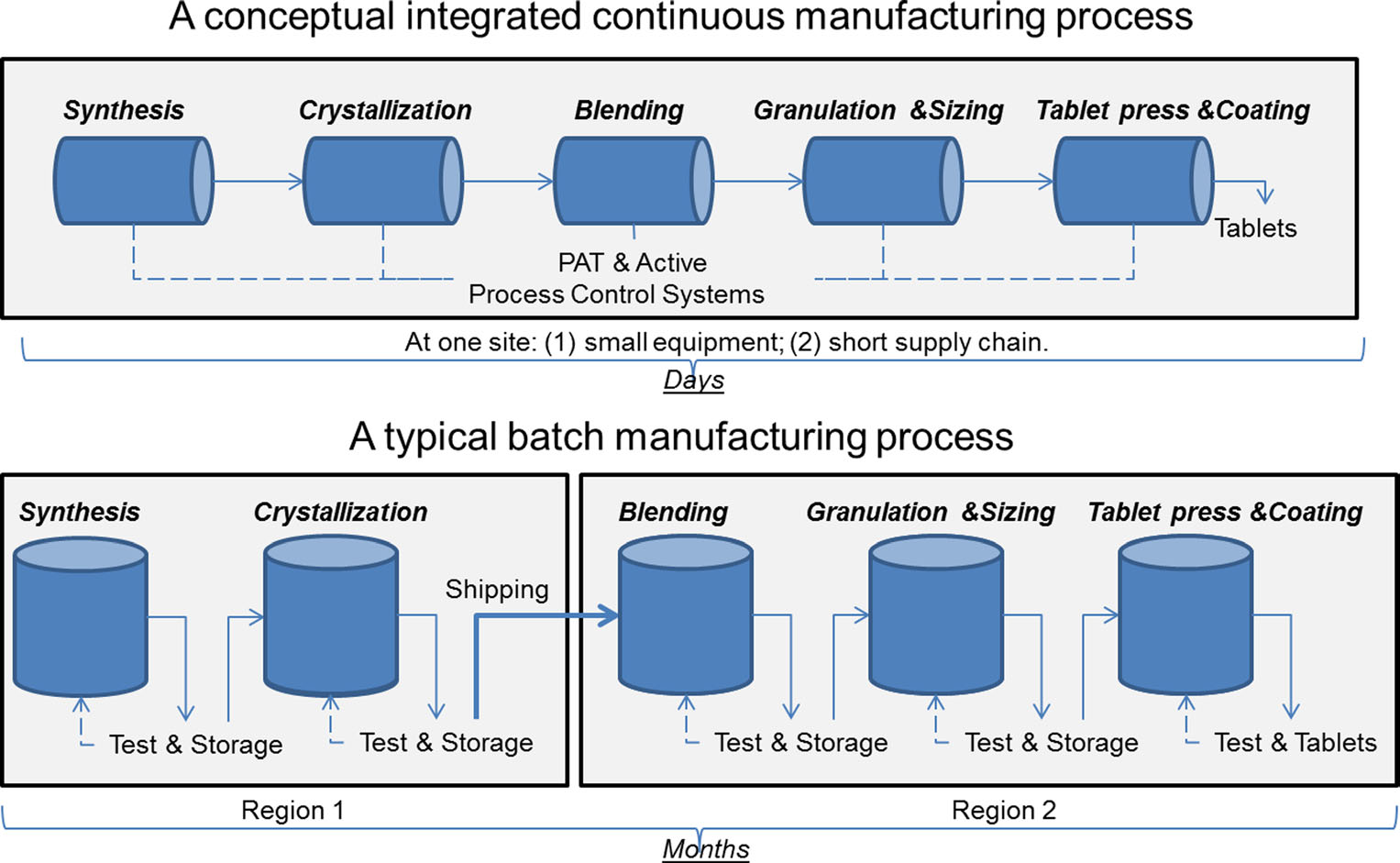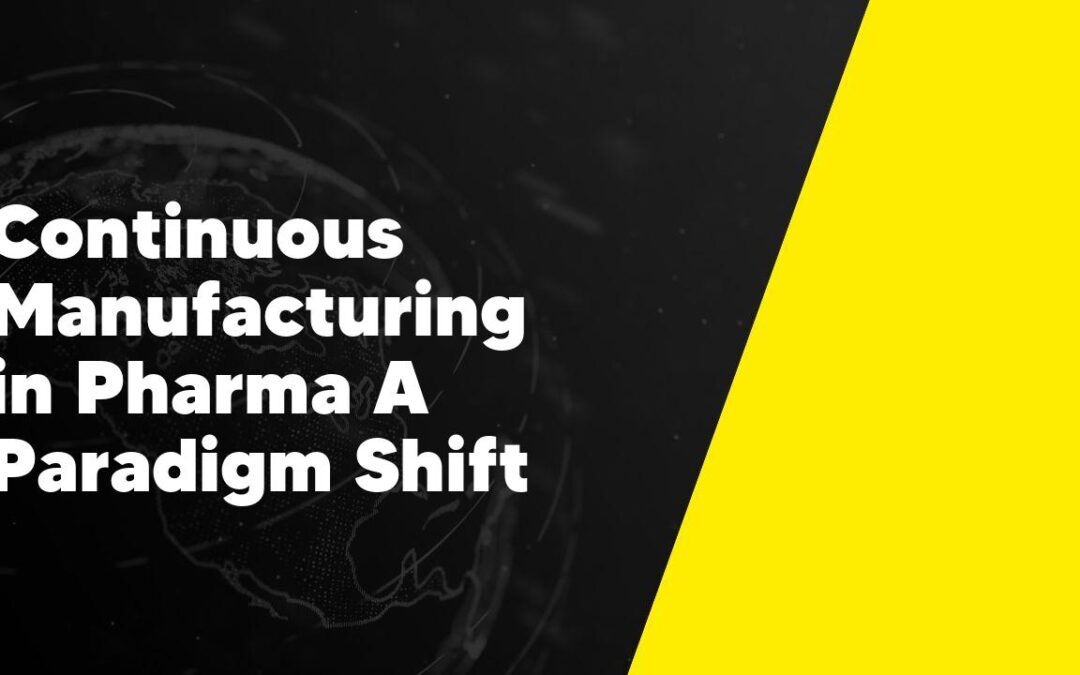Continuous manufacturing in the pharmaceutical industry is revolutionizing the way drugs are produced. With its ability to streamline processes, reduce costs, and increase efficiency, this new paradigm shift is transforming the way medications are manufactured. In this article, we will explore the concept of continuous manufacturing in pharma and its potential impact on drug development and supply chains.
1. The Evolution of Pharmaceutical Manufacturing: From Batch to Continuous
In my experience working in the pharmaceutical industry, I have witnessed a significant shift in the way drugs are manufactured. Gone are the days of batch manufacturing, where drugs were produced in large quantities at once. Instead, continuous manufacturing has emerged as the new standard. This evolution has brought about numerous advantages, including increased efficiency, reduced costs, and improved quality control. With continuous manufacturing, drugs can now be produced on a smaller scale, allowing for greater flexibility in meeting demand. Furthermore, the continuous process enables real-time monitoring and adjustments, promoting greater consistency and minimizing the risk of errors. Overall, this shift in pharmaceutical manufacturing has revolutionized the industry, paving the way for more efficient and reliable drug production.
2. The Potential Benefits of Adopting Continuous Manufacturing in the Pharmaceutical Industry

Continuous manufacturing has the potential to revolutionize the pharmaceutical industry in numerous ways. One of the most significant benefits is its ability to improve efficiency and reduce costs. With traditional batch manufacturing, there are often time-consuming and costly steps involved in the production process, such as cleaning and preparing equipment for each batch. However, continuous manufacturing eliminates the need for these steps, allowing for a streamlined and continuous flow of production. This not only saves time and resources but also ensures consistent quality and reduces the risk of errors. Additionally, continuous manufacturing enables real-time monitoring and control of the production process, allowing for immediate adjustments and improvements. Overall, adopting continuous manufacturing has the potential to increase productivity, reduce waste, and ultimately enhance the pharmaceutical industry as a whole.
3. Overcoming Challenges: Implementing Continuous Manufacturing in Pharma
Implementing continuous manufacturing in the pharmaceutical industry has been a challenging endeavor. As a pharmaceutical engineer, I have had to face numerous obstacles along this journey. One of the main challenges was convincing stakeholders of the benefits of continuous manufacturing. Many were hesitant to transition from the traditional batch process, fearing potential risks and higher costs. However, through persistent advocacy and presenting evidence of increased efficiency, improved product quality, and reduced waste, I was able to overcome their skepticism. Another hurdle was integrating the necessary technology and equipment into existing facilities. This required careful planning and coordination to ensure a seamless transition without disrupting production. Despite these challenges, the successful implementation of continuous manufacturing has revolutionized our pharmaceutical processes, paving the way for greater efficiency and innovation in drug development.
4. The Role of Advanced Process Analytics in Optimizing Continuous Manufacturing
In my experience, advanced process analytics play a crucial role in optimizing continuous manufacturing. As a production manager, I have witnessed firsthand how these analytics can help identify inefficiencies and improve overall performance. By analyzing data in real-time, we are able to spot any deviations from the desired process conditions and take immediate corrective actions. This not only minimizes the risk of product failures but also increases productivity and cost-effectiveness. Furthermore, advanced analytics provide insights into the root causes of any process variations, allowing us to continuously refine and fine-tune our manufacturing processes. With the help of these tools, we can optimize our operations and ensure consistent product quality and customer satisfaction.
5. Regulatory Considerations for Continuous Manufacturing in Pharma
When it comes to implementing continuous manufacturing in the pharmaceutical industry, there are several regulatory considerations that need to be taken into account. As a representative of the FDA, I understand the importance of ensuring the quality, safety, and efficacy of pharmaceutical products. Continuous manufacturing involves the use of real-time monitoring and control, which may require adjustments to existing regulations and guidelines. It is crucial for pharmaceutical companies to work closely with regulatory authorities to develop appropriate frameworks and standards for continuous manufacturing. This will help ensure that the end-products are of the highest quality and meet all regulatory requirements. Additionally, ongoing collaboration between industry and regulatory agencies is essential to address any potential challenges and ensure a smooth transition towards continuous manufacturing in the pharma sector.
6. Case Studies: Success Stories in Adopting Continuous Manufacturing
In my experience, adopting continuous manufacturing has truly revolutionized our operations and boosted our productivity. One success story that stands out is the introduction of a continuous manufacturing process for our pharmaceutical products. By eliminating the need for batch processing and embracing a more streamlined approach, we have significantly reduced production time and costs. Not only that, but the quality of our products has also improved, as continuous manufacturing allows for more precise control and monitoring of the production process. The efficient and consistent output has not only impressed our clients but has also enabled us to gain a competitive edge in the market. The success we have achieved through continuous manufacturing serves as a testament to the transformative power of embracing innovative technologies in the industry.
Conclusion
In conclusion, continuous manufacturing represents a significant shift in the pharmaceutical industry, offering numerous advantages over traditional batch manufacturing. It allows for increased efficiency, reduced costs, and improved quality control. As more companies adopt this new approach, it is likely to become the standard in pharmaceutical production, revolutionizing the way drugs are manufactured and ultimately benefiting patients worldwide.
What is continuous manufacturing in pharma?
Continuous manufacturing in pharma refers to a production method where the entire manufacturing process, from raw material input to final product output, is carried out continuously without interruption.
Why is continuous manufacturing considered a paradigm shift in the pharma industry?
Continuous manufacturing is considered a paradigm shift in the pharma industry because it offers a range of advantages over traditional batch manufacturing, including improved efficiency, quality control, and cost-effectiveness.
What are the main advantages of continuous manufacturing in pharma?
The main advantages of continuous manufacturing in pharma include reduced manufacturing time, better control over the manufacturing process, reduced risk of product variability, and improved scalability.
What challenges does continuous manufacturing present?
Continuous manufacturing presents challenges related to process control and monitoring, equipment reliability and maintenance, regulatory compliance, and the need for specialized training and expertise.
Is continuous manufacturing widely adopted in the pharma industry?
Although continuous manufacturing is gaining popularity in the pharma industry, it is not yet widely adopted. However, regulatory agencies such as the FDA and EMA have shown support for continuous manufacturing and have provided guidelines to encourage its implementation.
What is the future of continuous manufacturing in pharma?
The future of continuous manufacturing in pharma looks promising. It is expected that more pharmaceutical companies will adopt this manufacturing approach to benefit from its advantages and overcome the limitations of traditional batch manufacturing.

